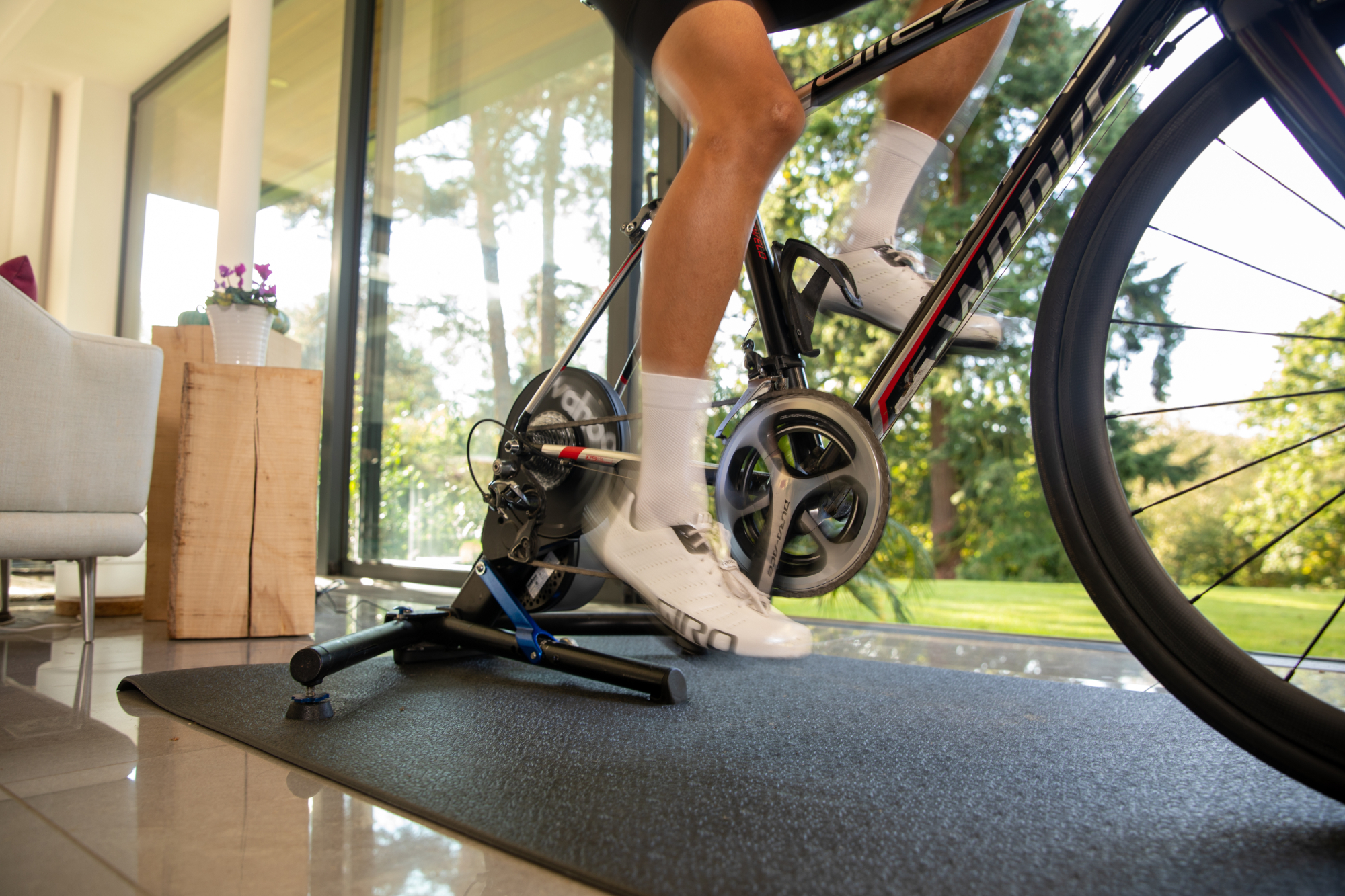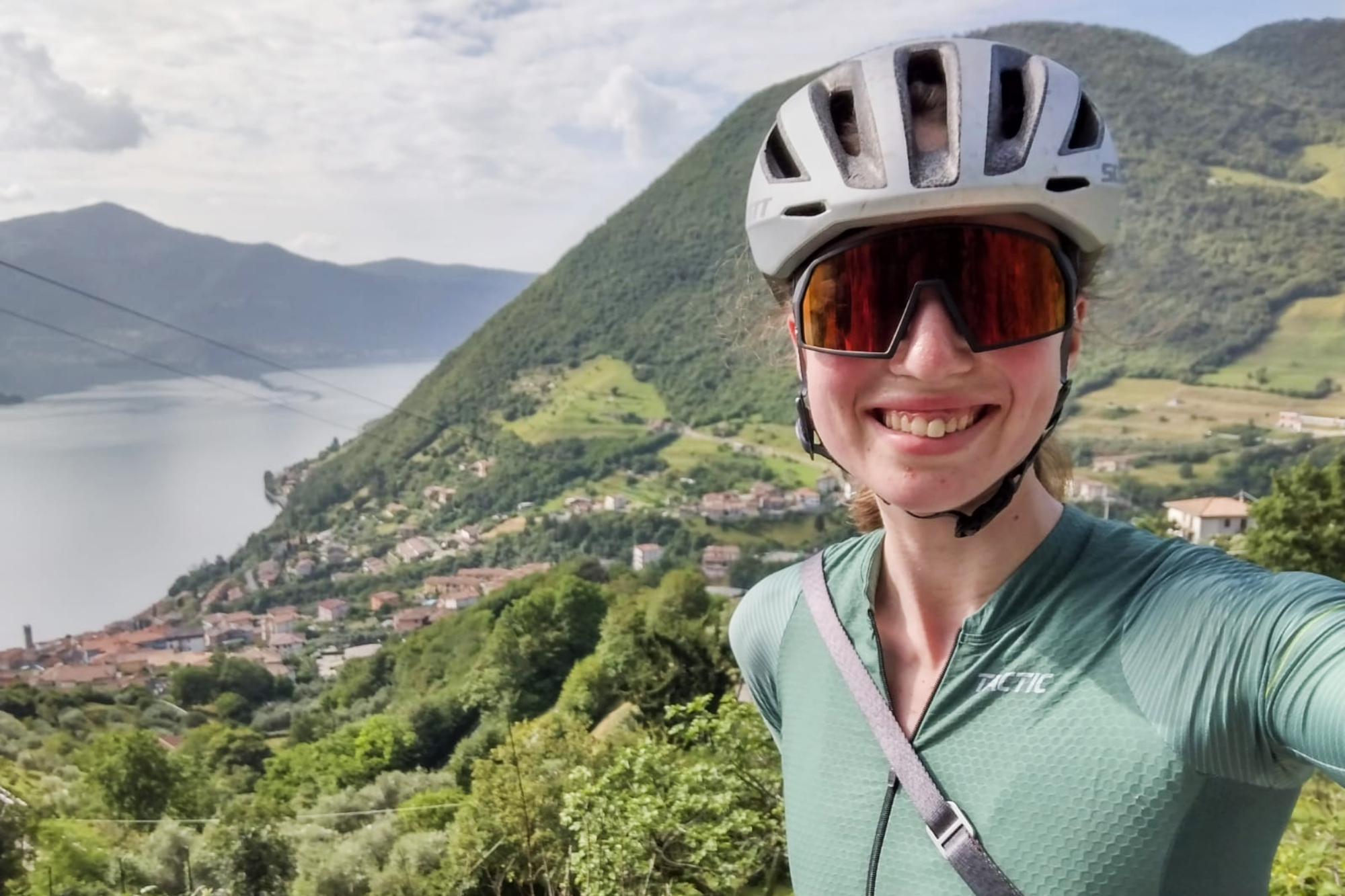Eight of the most common indoor training mistakes and how to avoid them
Inaccurate FTP testing, when to use ERG mode, sweat protection - we take you through the common pitfalls most of us have all hit at some point…


With no disruptions from traffic and inclement weather being an non-issue, indoor cycling is one of the most effective and time efficient ways to execute your workouts. The best indoor training apps for cycling also offer an excellent and easy resource to access for finding training sessions for whatever length of time you have available - you can check out some indoor training workout recommendations over here.
But with all that said, indoor cycling is quite different from riding outside and there are some simple mistakes that you can easily make. Still, they’re not hard to correct (so long as you’re aware of them!)
We spoke to two cycling coaches - Jonathan Melville of BCA (Breakaway Coaching and Analytics) and Tim Phillips of Catenary Cycle Coaching - to find out about some of the common mistakes they see riders making so that you know what to look out for in your own indoor riding…
1. Don’t assume outdoor and indoor watts are the same
It’s all too easy to assume that you can simply stick with your same power values and pacing strategies from your outdoor riding for your indoor sessions, whether it’s a time trial, interval workout or something else - but don’t fall into that trap.
“When riding outdoors, there are a lot more variables that need to be considered, wind speed, terrain, road surface, etc.,” Melville explains. “This often results in a lot more variability in your power output when riding outdoors compared to indoors.”
To put this into perspective, Melville points out that your power can fluctuate by as much as 50% more when riding outdoors. These micro-recoveries and surges are quite different to the more ‘steady state’ riding indoors, where your power output varies much less.
“As a result, when planning your pacing strategy indoors try using your indoor peak power curve to decide the optimal power to sustain,” Melville advises. Don’t underestimate how psychologically taxing it can be missing out on those variances in your power output.
The latest race content, interviews, features, reviews and expert buying guides, direct to your inbox!
2. Don’t neglect your fuelling

Often when training indoors you are exposed to a much more hot and humid environment than outdoors (although the opposite is true in some parts of the world). With that in mind, for most people it’s important to mitigate the effects of this with specific fuelling for those efforts.
“Although heat training can have benefits (it can improve core temperature regulation and increase blood plasma volume for example) it can also increase the likelihood of heat stroke,” Melville points out. “Therefore, do ensure you are not neglecting your fuelling and hydration - and consider taking on isotonic drink solutions during your sessions.”
Melville suggests drinking up to 1.5 liters for an hour’s session (or roughly 150-200mL every 5-20 minutes), depending on the intensity and your sweat rate. We cover what to drink when cycling in more detail over here.
3. Don’t always use ERG mode

ERG mode is a feature on the best smart turbo trainers which keeps the trainer resistance constant, even as your cycling cadence varies and you spin fewer or more RPMs.
“Whilst you do get the physiological benefit from a workout using ERG mode, what you don’t get is the practice of pacing an effort - and using cadence and gearing to change your effort level, which you need to do on the road,” Phillips explains.
“ERG mode also means you never find out if you could have gone a bit harder, and you can hit the issue of the ‘death spiral’ where the trainer keeps raising resistance as your cadence drops - causing your cadence to drop further and precipitating a vicious circle of ever more resistance until you can’t turn the pedals.”
A real race doesn’t have ERG mode (even a virtual race) so Phillips would recommend doing training sessions without it as well.
4. Don’t be rely on your FTP from outside rides

In some cases, cyclists find their FTP (or average power in general) is considerably lower when riding indoors compared to outdoors.
Power output can be over 20% lower indoors compared to outdoor riding, according to Melville.
“A potential reason for this may be that the air flow from the outdoors is keeping our skin (and therefore body temperature) cooler, resulting in riders able to push harder and produce more power outdoors,” he says. “Conversely, this is only in some cases, so it would be advantageous to conduct an FTP test both indoors and outdoors to see if there is any difference to ensure you are training in the most accurate way possible.”
If you’re looking to use Zwift for this, over here we explain which Zwift FTP test you should do, and how to get the best result you can. There are 5 alternatives to the 20-minute FTP test that you could also do instead.
5. Don’t make your ‘pain cave’ an unpleasant place to be

Often we refer to the place where we complete indoor training on the turbo as a ‘pain cave’. These are often not the nicest of places and it can make indoor riding feel harder and less motivating than it should be.
“You want to ensure the environment you have set up for your indoor training is optimal,” Melville stresses. “Creating a setting with dimmed lights and music has been shown to reduce tiredness and create more enjoyment when completing indoor training.”
In our My Training Space series we cover some of the aspirational set-ups that you have - over here massage therapist and athletic all-rounder Andy Keegan walks us around his do-it-all garden training room which is as impressive as it sounds.
6. Not having a fan

If you’re riding without a fan at the moment, do invest in a decent sized floor fan (the sort you see in a gym rather than an office) or a cycling specific unit such as Wahoo’s Headwind fan which can even increase its speed as your heart rate increases - so you don’t get too chilled when warming up or resting, whilst still also getting the maximum cooling effect when going at full tilt.
“When you’re riding outdoors, moving through the air provides a significant cooling effect (even on a hot day), which simply isn’t there if you’re not moving on the turbo,” Phillips explains.
7. Not protecting your bike from sweat
As a result of the reduced cooling effect described above when riding indoors, you are quite likely going to be dripping in sweat at some point during your indoor workout (some more than others!) As such, you’ll need to protect your bike from this sweat, and the salt’s corrosive effects.
“It’s well worth making sure your sweat doesn’t end up in more delicate parts of your bike like the headset bearing which is located where sweat drips are highly likely,” Phillips points out.
8. Not riding outdoors!
“There are lots of advantages of training indoors - it’s time efficient, ideal for cold/dark/wet days, and allows you to focus on a specific workout, safely - but you don’t learn bike handling, confidence when riding with others. As such, at least some of your riding needs to be outdoors, or those big power numbers won’t mean much,” Phillips argues.
Here are seven benefits of riding outdoors, which you’ll miss out on if you train inside all winter!

I’ve been hooked on bikes ever since the age of 12 and my first lap of the Hillingdon Cycle Circuit in the bright yellow kit of the Hillingdon Slipstreamers. For a time, my cycling life centred around racing road and track.
But that’s since broadened to include multiday two-wheeled, one-sleeping-bag adventures over whatever terrain I happen to meet - with a two-week bikepacking trip from Budapest into the mountains of Slovakia being just the latest.
I still enjoy lining up on a start line, though, racing the British Gravel Championships and finding myself on the podium at the enduro-style gravel event, Gritfest in 2022.
Height: 177cm
Weight: 60–63kg